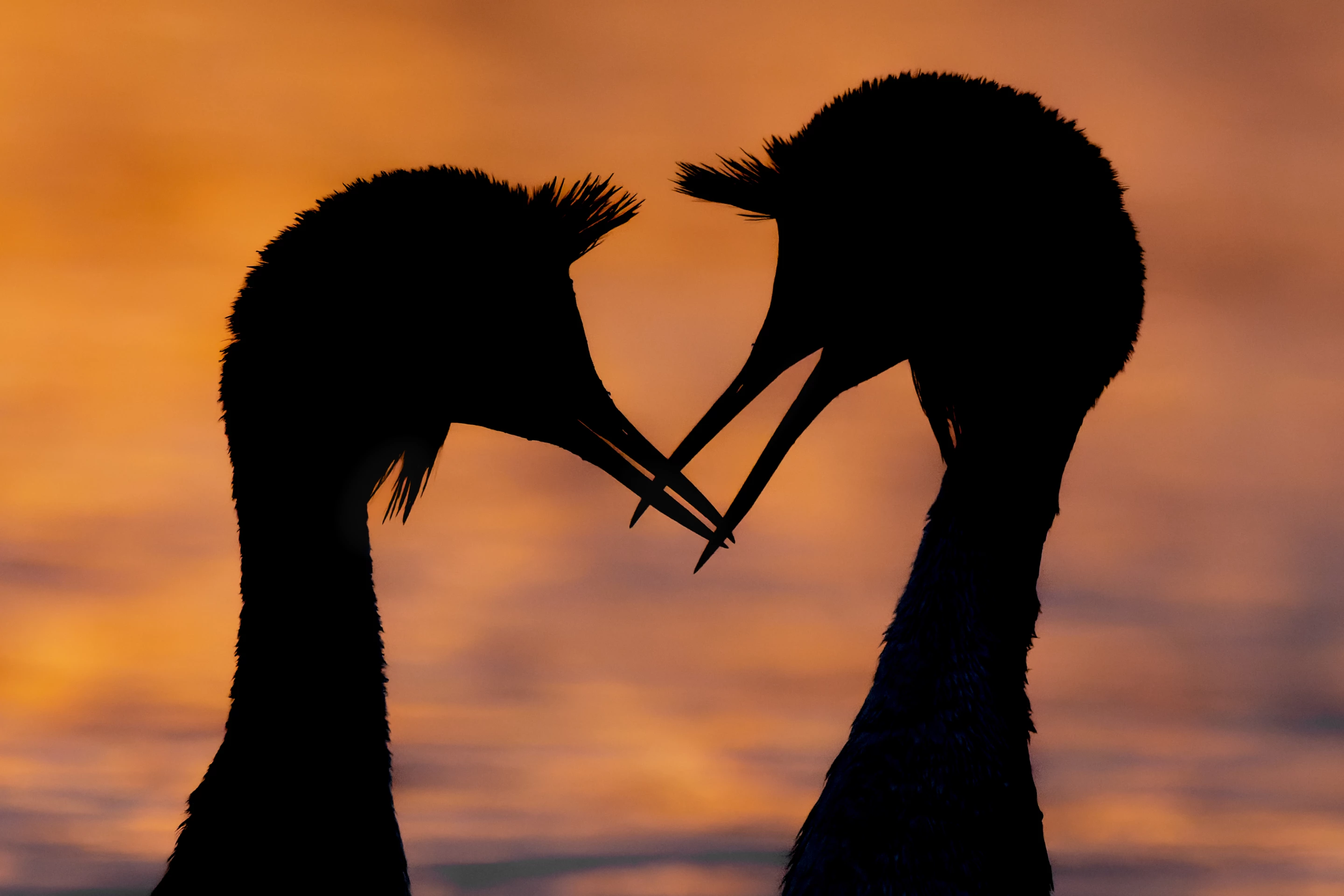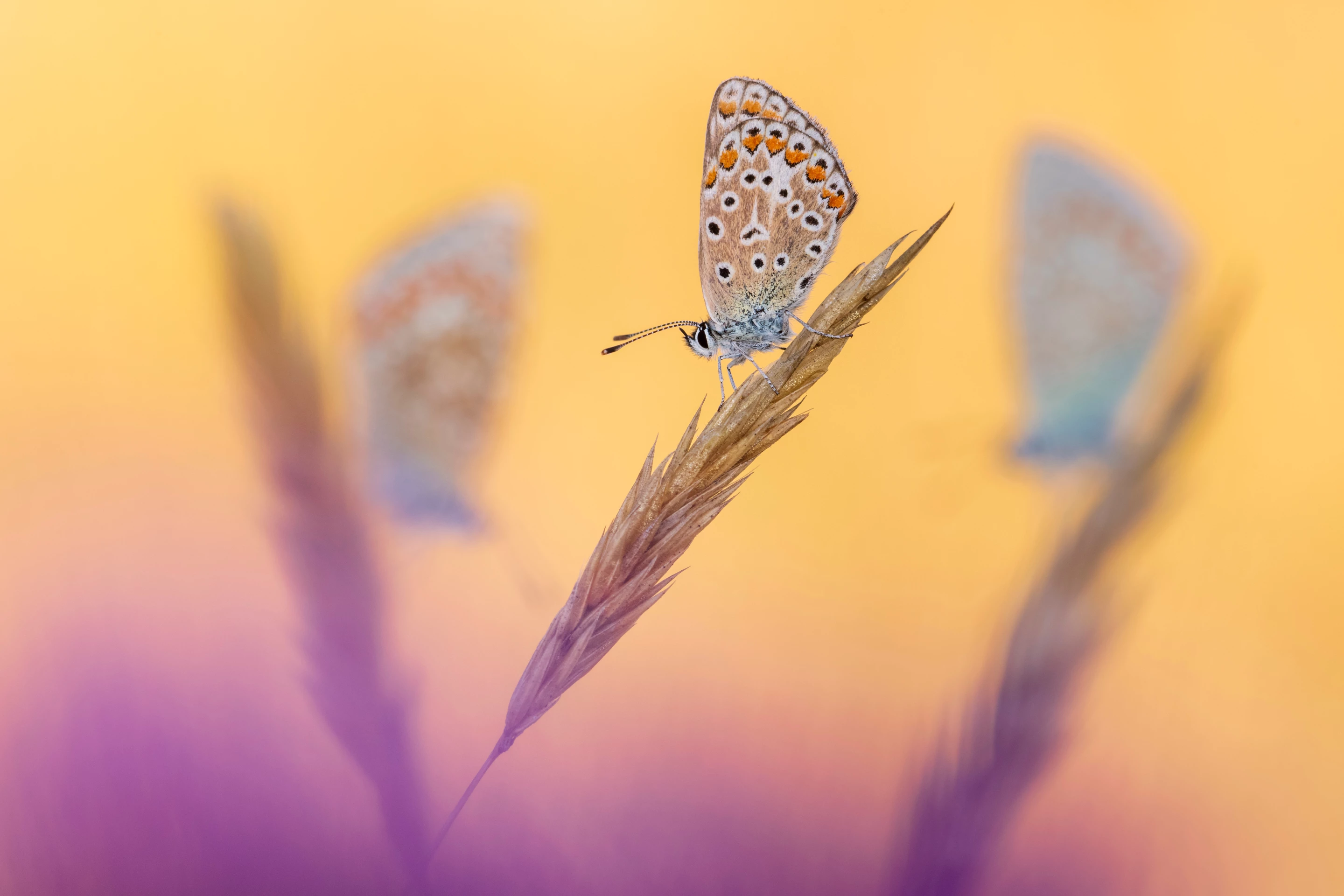A dramatic image of a soccer ball covered in invasive goose barnacles has taken out the top prize in this year's prestigious British Wildlife Photography Awards, beating out more than 14,000 entries capturing the world around us.
The photo, snapped by Ryan Stalker, is a powerful reminder of how many wonders of nature are out there – if you know where to look.
“Above the water is just a football," Stalker said. "But below the waterline is a colony of creatures. The football was washed up in Dorset after making a huge ocean journey across the Atlantic. More rubbish in the sea could increase the risk of more creatures making it to our shores and becoming invasive species.”

“The British Wildlife Photography Awards brings to light the spectacular tapestry of Britain’s natural heritage,” said Will Nicholls, Director of BWPA. “This collection is more than just a gallery of images; it is a celebration, a reminder of the enduring beauty of British wildlife and a call to preserve the natural spaces that we are so fortunate to have.”
Check out some of the highlights below, and view our gallery to see all winners and runners-up across the 10 adult categories (Animal Behaviour, Animal Portraits, Botanical Britain, Black & White, British Seasons, Coast & Marine, Habitat, Hidden Britain, Urban Wildlife and Wild Woods) and three junior groups (11 and Under, 12-14 Years and 15-17 Years).
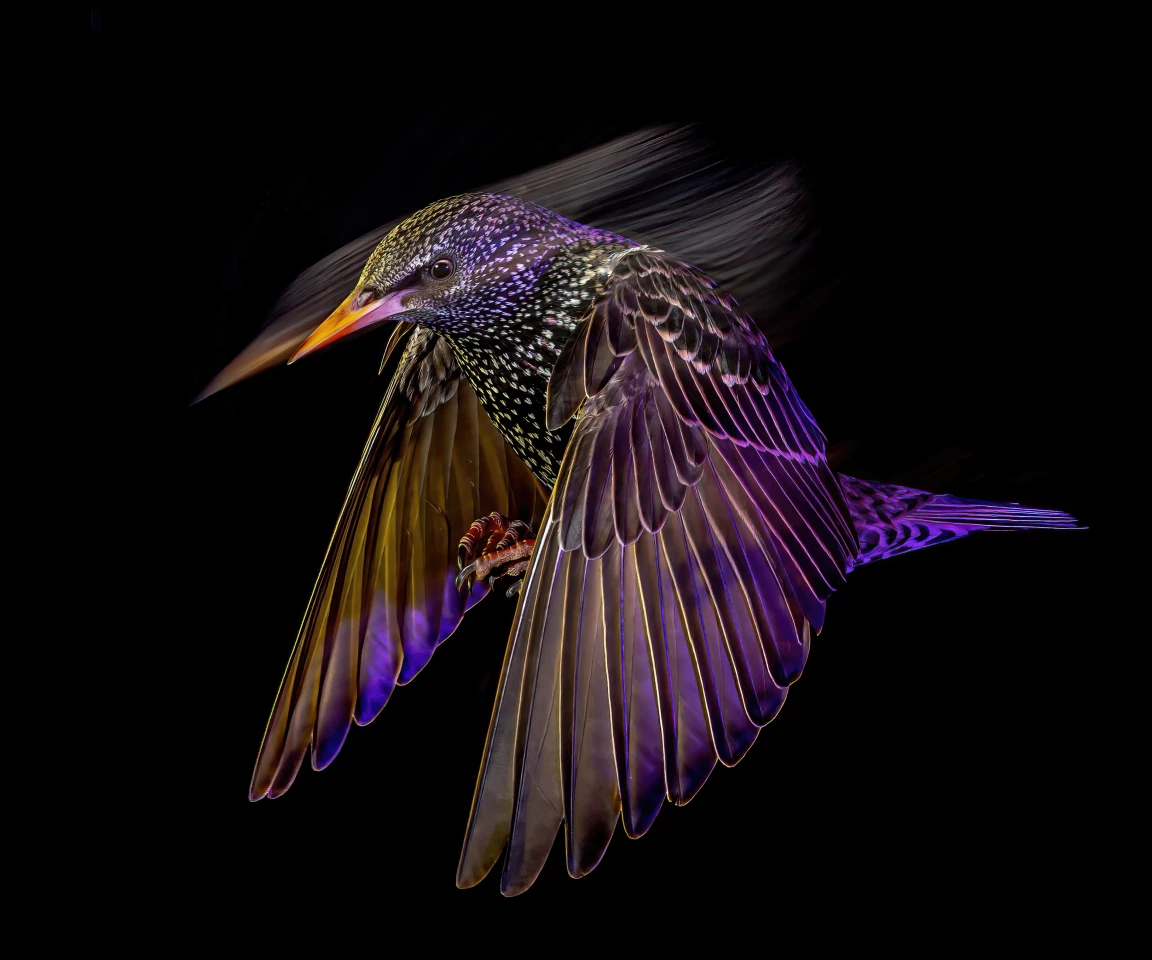
Mark Williams captured this otherworldly shot of a common starling (Sturnus vulgaris) in the West Midlands, which earned him the top prize in the Animal Portraits category. It's a stunning image, especially given how difficult it is to capture birds in flight at night.
"I had been observing the birds in my garden as they fed on sunflower seeds and peanuts from the feeder for some time," Williams said. "I aimed to capture the sense of movement and flight patterns in my images while still preserving the fine details of the birds. To achieve this, I used flash in rear curtain sync mode. Timing was crucial, and I needed to carefully balance the flash with the ambient light to record the starling’s trail at the beginning of the exposure, while a brief burst of flash would freeze the bird in mid-flight."
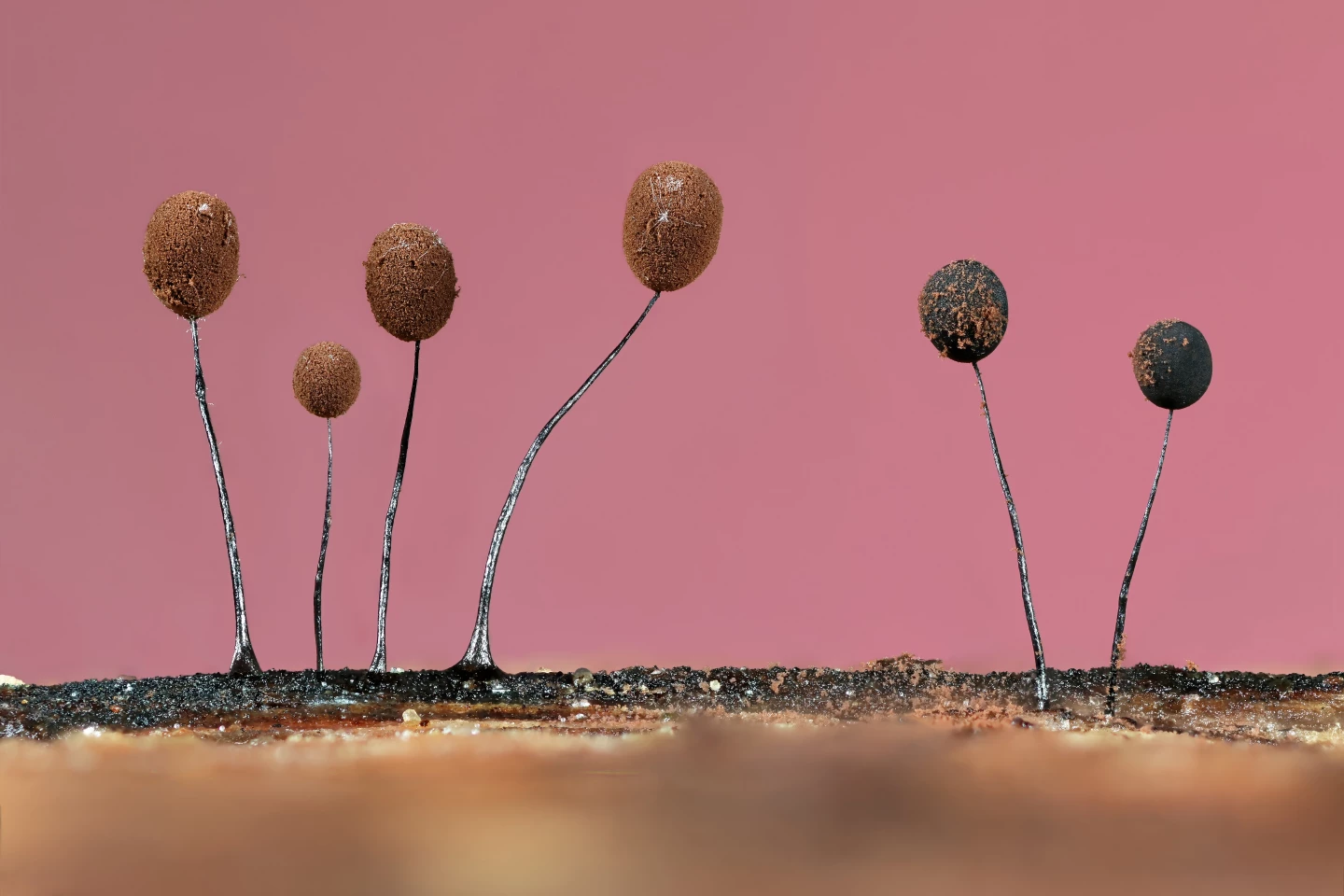
In what may make slime mold enthusiasts a little hot under the collar, this image of the delicate, tiny single-celled organisms won the Botanical Britain category. A little controversial, since slime mold (Comatricha nigra) is not a botanical – nor is it an animal or a fungus. It's a microscopic protist. It's also incredibly cool.
"The world of slime molds is fascinating," said photographer Jason McCombe, who snapped this tiny growth in Essex. "They’re neither plants nor fungi. I had never noticed them before, but when I set out to find some to photograph, I discovered that, if conditions are right, they’re everywhere! They’re just so small that if you are not looking for them you will simply overlook them. Each head on these fruiting bodies is approximately 1-mm wide, and the depth of field when shooting at such high magnification is so shallow that focus stacking is required. This image was made using 160 images, each focused on a different area of the scene, then stacked together to create one highly detailed image."
While it can be argued the protists' name is hardly appealing – slime and mold? No thanks – they spend much of their life invisible to the human eye, in microscopic form. But during the plasmodial stage of their life cycle, the formations McCombe captured emerge – and they can span up to three feet in size. They're also harmless to humans and animals, and actually act as ecosystem helpers, feeding on bacteria, fungi and decaying organic matter.

Another dazzling winner, this time in the Wild Woods category, comes from Graham Niven in Scotland. Having lost most of their leaves for the season, these beech (Fagus sylvatica) show a perfect example of canopy shyness, or crown shyness, in which the tops of mature trees go to great lengths to not touch each other and instead form an all-but-interlocking system of thousands of branches that form the forest's cover.
"The trees form a canopy that has channel-like gaps which, when photographed from below, appear to create an intricate network of channels between the respective canopies," said Niven. "Besides the wondrous vision you are afforded, it’s also just a great excuse to lie down in the forest.
Scientists believe that trees avoid touching each other to maximize each one's access to light for photosynthesis. However, there are also theories that the process limits the spread of parasites and disease jumping from tree to tree, and it may limit damage inflicted by neighbors during windy weather.
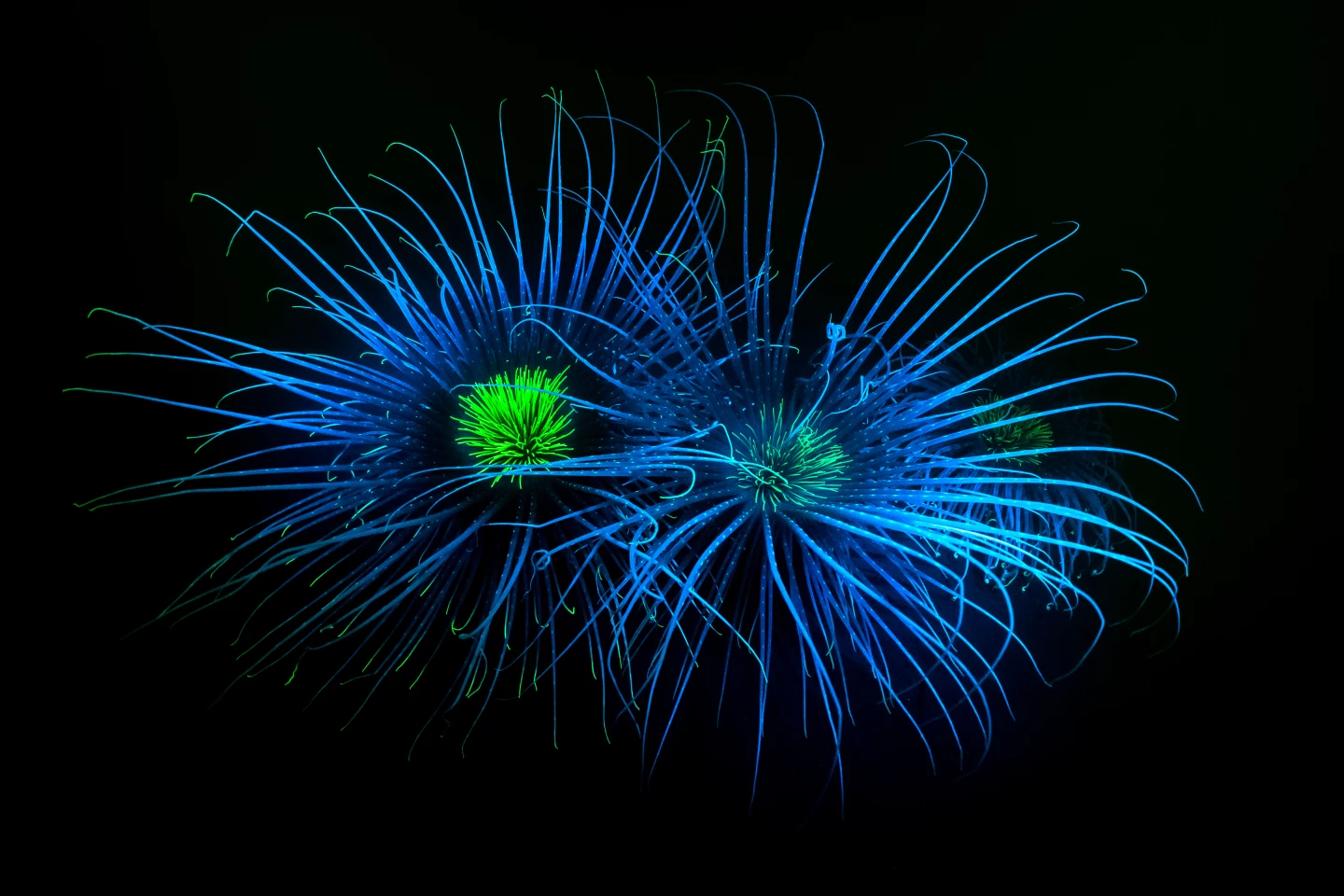
Another bizarre and rare capture is this shot of a fireworks anemone (Pachycerianthus multiplicatus), taken by Dan Bolt in Scotland. These anemones, which grow up through mud in subtidal areas, have extruding tentacles that look to be bursting outwards in the water, which inspired their common name.
Naturally, they're brown and white, but Bolt leaned into their 'fireworks' side and gave them a fluorescent makeover – and, lucky for him, they remained blissfully unaware.
"Fluorescence photography requires specialist filters: one ‘exciter’ filter on your white-light source to create the blue light and another ‘barrier’ filter in front of your lens to reduce the ambient light reaching your sensor," he explained. "These dual filters mean that high ISOs and open apertures are very much required in order to capture the excited, or fluoresced, light. The subject requires a careful approach too; these anemones live in very still water and are sensitive to the slightest movement. If disturbed, they will retract in mere seconds."
See the rest of the winners and runners-up in our gallery here.





